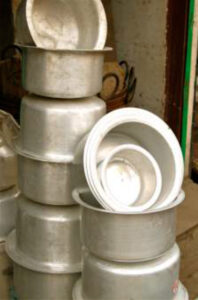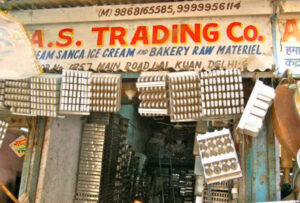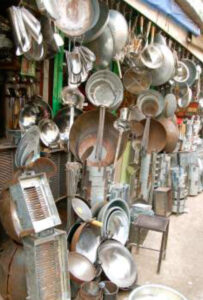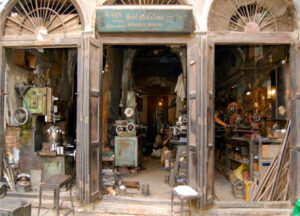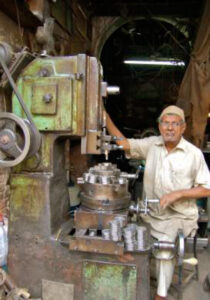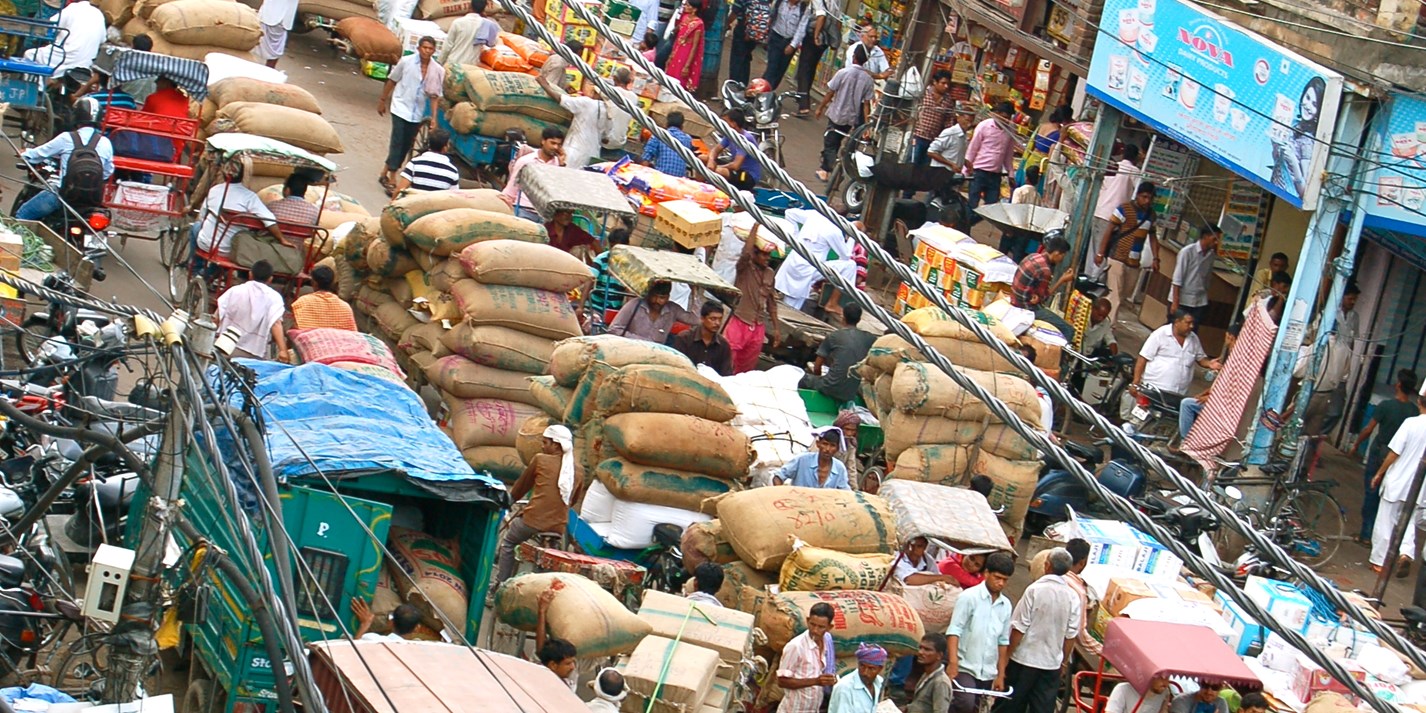
Shahjahanbad, A Slice of Living History
My personal journey with Old Delhi began in the mid 1990’s. My advanced chef training after hotel school was at the ITC Maurya Sheraton in New Delhi, which is also home to the iconic Bukhara restaurant. On the few days we were off work (and not too tired), we would venture into Old Delhi. The first few trips were out of a sense of adventure getting on our bikes and heading for a food binge. I still remember our food haunts from those times, many of which continue to thrive on. My first sight of the Galiparanthewali (1870’s) in ChandniChowk – a whole lane dotted with vendors preparing and selling parathas. The mad maze of electricity wires and cables, hovering perilously close to our heads.The ‘Sohanhalwa’ from Ghantewala sweets (1790) which unfortunately shut down in 2015, after a whopping 225 years in business.Dahibhalla at Natraj (1940) or watching the cooks at Old famous jalebiwala (1884) with their giant kadhai(wok) and jalebis sizzling in desi ghee or buying kitchen equipment from the wholesalers at LalKuan. My first gastronomic experience at Karim’s was unforgettable. Winter climes brought us the warmth of delicious treats: Daulatki chaat (aerated milk custard), Shakarkandi (roasted sweet potato chaat) and piping hot Gajarhalwa (carrot fudge). On a side note, I must say I love the misty look that veils Delhi in the winter. I have mentioned a lot of food spots but believe me when I say there is so much more to explore, discover and talk about.
Every trip to Delhi since, has always included a day in the old city. This time though, I take a short metro ride from downtown New Delhi that transports meinto another world. From Ajmeri gate, one of the few surviving gates of Delhi, I stepinto Shahjahanabad, popularly called ‘Puranidilli’ or Old Delhi. Built by the Mughal emperor, Shah Jahan in the 1640’s, it still bears rich influences in art, architecture and cuisine.
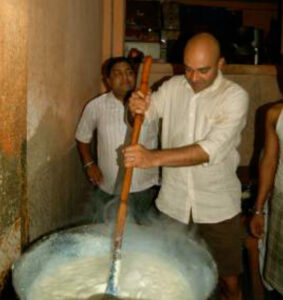
In the kitchen of a Rabri-wala for a bit of bonhomie
The first institution that I go past,is the erstwhile Ghaziuddin’s Madarasa (late 1600’s), re-named the Anglo-Arabic school. There are several such institutions, bearing humble façadesyetrich legacies. I walk through the narrowest of by-lanes and alleyways, sighting gorgeous but crumblingHavelis (mansions) knowing that each of these streets have plenty of stories to tell. If the old city had the ‘blue plaque’ system that Britain has, every other building would have its story on display.
I stop for a typical Delhi breakfast of Bedmi aloo: wholegrain pooris (puffed, deep fried bread) stuffed with pitthi (lentil paste) along with a potato curry and a side of seriously hot, marinated green chillies.
A tiny teashop opposite Tara Devi happy school, serves a perfect masala chai in a kulhar (unglazed terracotta cup). The street here is barely 4 feet wide and I am ushered into a doorway of a neighbor’s home to enjoy my cuppa. I stand there, on a little elevation from the street, taking in the sights, smells, crowds and buzz of this land, completely disconnected to my life from an hour ago.
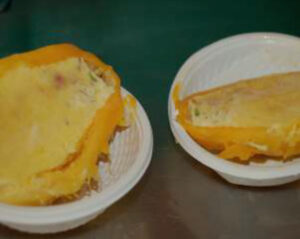
LalaDuliChand’s Kulfi shop
Lala Duli Chand’s Kulfi shop in Sitaram Bazar offers me a new favourite: a fresh, stuffed mango Kulfi. A frozen mango is cut in half to reveal a Kulfi inner, in place of the seed. They also serve a delicious pomegranate and paan ice cream.
The ancient and fascinating metal-work and kitchen supplies shops in Lalkuan
I start to smell the spices many a yard before arriving at Khari Baoli, started possibly four centuries ago and considered Asia’s largest spice market. Some of the traders proudly boast of being the 10th generation in their family business. I am fascinated by the heady fragrance in the air and the amazing array and quality of dried fruit, nuts, herbs and spices. Each time I have been there I am overwhelmed by what I see and get goosebumps of excitement.
After going a bit overboard with my stash of spices, I move on to more wondrous eats:
Garwahal paneer bhandar for super-fresh paneer (Indian cottage cheese). They also do a great coriander and cumin version.
Chaina Ram sindhi confectioners, more than a 100 years old, to sample their Karachi Halwa.
Pandit’s: Nimboo (Lemon) soda with masala.
Rabri falooda at an urban legend, Giani’sdihatti.
Brijwasifor Malai lassi
Bade Mian for Kheer (rice pudding)
I walk past the historic Namakharamkihaveli (mansion of the traitor), which bears a beautiful frontage but awful history. I can’t help but duck into the haveli-museum of Urdu and Persian poet extraordinaire MirzaGhalib. Urdu poetry is possibly second to none and a lot of it possibly has to do with the beauty of the language itself and thegenteel tone in which it is spoken. I can feel the palpable connect to this heritage in my interaction with the locals, who speak with a heightened sense of decorum and exude a certain character and ethos that is pure vintage. They speak in beautiful sounding dialects and their stories bring alive this heartland. I wonder how much of this information is documented or is it just human-archived, which may not stand the test of time.
Shahjahanabad is also home to majestic monuments like the JamaMasjid (1656), India’s largest mosque and the ‘Lalqila’ or Red fort (1648), built along the banks of the Yamuna river. The incredible culinary gems behind the JamaMasjid offer a heady feast for the senses: Karim’s (1911) for a mouth-watering range of Kababs or Bunduhaleemwala, who’s Haleem (slow cooked meat and broken-wheat porridge) sells out in 2 hours. Kallumian’sNalli-nihari (slow cooked mutton stew) with Khamiri roti is again stuff of the legends. This pocket is a veritable meat-lovers paradise.
The old city has a magical relationship with food dating back to Mughal times. Food here is made with culinary secrets passed down generations and made more special with lashings of history.
Over the years, I have understood its different nuances, peeling each layer to discover a greater depth and richness. I have included dates to many institutions to highlight their remarkable history. To have several, centuries old, thriving institutions in one vicinity, is extremely rare and unique. While some see the dust, chaos and crowds of Shahjahanabad, I see a bustling and precious living heritage.


